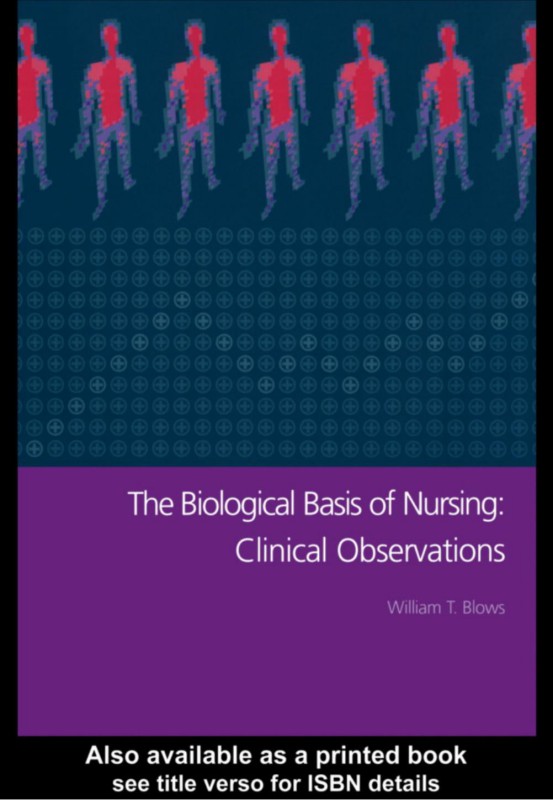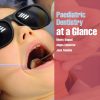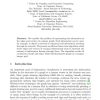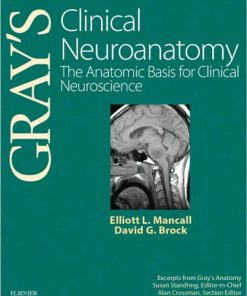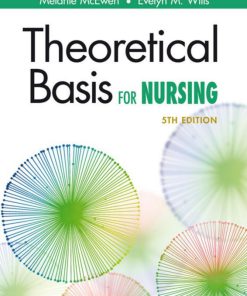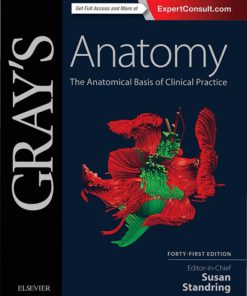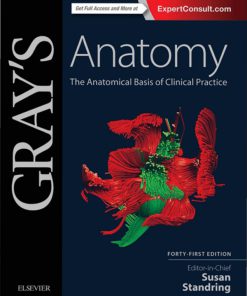The Biological Basis of Nursing Clinical Observations 1st Edition by William Blows ISBN 0415212553 9780415212557
$50.00 Original price was: $50.00.$25.00Current price is: $25.00.
Authors:William T. Blows , Tags:Nursing/Health Science , Author sort:Blows, William T. , Comments:Comments:Nursing/Health Science
The Biological Basis of Nursing Clinical Observations 1st Edition by William Blows – Ebook PDF Instant Download/Delivery. 0415212553 ,9780415212557
Full download The Biological Basis of Nursing Clinical Observations 1st Edition after payment

Product details:
ISBN 10: 0415212553
ISBN 13: 9780415212557
Author: William Blows
Accurate clinical observations are the key to good patient care and fundamental to nursing practice. To be fully competent in these basic skills, nurses need to understand not only how and why procedures are performed, but also how results are affected for example by variation in technique or the health status of the patient.
The Biological Basis of Nursing: Clinical Observation is a unique text which integrates explanations of essential nursing procedures with the biological knowledge that underpins practice. Essential reading for all students preparing for clinical practice in nursing.
The Biological Basis of Nursing Clinical Observations 1st Edition Table of contents:
Chapter 1: Introduction to the Biological Basis of Nursing
- The Relationship Between Biology and Nursing Practice
- Key Biological Concepts in Nursing
- The Role of Clinical Observations in Patient Care
- Overview of the Biological Sciences Relevant to Nursing
Chapter 2: Cellular Biology and Tissue Structure
- Understanding Cell Function and Structure
- Cellular Communication and its Impact on Health
- Tissue Types and Their Functions
- Implications of Cellular Biology for Nursing Care
- Observing Cellular and Tissue Changes in Clinical Practice
Chapter 3: Genetics and Inheritance
- Fundamentals of Genetics and Heredity
- Genetic Disorders and Their Impact on Nursing Practice
- The Role of Nurses in Genetic Counseling
- Clinical Observations of Genetic Conditions in Nursing
- Implications of Genetic Testing for Patient Care
Chapter 4: Physiology and Homeostasis
- Overview of Human Physiology
- Maintaining Homeostasis: Body Systems and Feedback Mechanisms
- Observation of Physiological Changes in Health and Disease
- Vital Signs and Their Biological Significance
- Clinical Techniques for Monitoring Physiological Changes
Chapter 5: The Nervous System and Sensory Systems
- Structure and Function of the Nervous System
- The Brain, Spinal Cord, and Peripheral Nervous System
- Observing Neurological Symptoms and Their Implications
- Sensory Systems: Vision, Hearing, Taste, and Touch
- Clinical Observation of Neurological Disorders
Chapter 6: The Endocrine System and Hormonal Regulation
- Overview of the Endocrine System and Hormones
- Hormonal Control of Body Functions
- Clinical Implications of Endocrine Disorders
- Observing Signs and Symptoms of Hormonal Imbalances
- Managing and Observing Endocrine Disorders in Clinical Settings
Chapter 7: Cardiovascular System and Blood Circulation
- Structure and Function of the Heart and Blood Vessels
- Blood Pressure Regulation and Cardiac Output
- Clinical Observations of Cardiovascular Health
- Common Cardiovascular Disorders and Their Nursing Implications
- Monitoring and Managing Cardiovascular Conditions in Clinical Practice
Chapter 8: Respiratory System and Gas Exchange
- Physiology of Breathing and Gas Exchange
- The Role of the Lungs and Respiratory System in Health
- Observing Respiratory Changes and Clinical Symptoms
- Respiratory Disorders and Their Biological Basis
- Nursing Interventions for Respiratory System Disorders
Chapter 9: Renal System and Fluid Balance
- Kidney Function and Fluid Regulation
- The Role of the Renal System in Maintaining Homeostasis
- Clinical Observations of Renal Function and Urine Output
- Fluid and Electrolyte Imbalances: Causes and Effects
- Managing Renal and Fluid Balance Disorders in Nursing
Chapter 10: Immune System and Infection
- Structure and Function of the Immune System
- Immune Response and Mechanisms of Defense
- Observing Signs of Infection and Immune Dysfunction
- Vaccinations and Their Biological Basis
- Managing Infectious Diseases in Nursing Practice
Chapter 11: Digestive System and Nutritional Support
- Structure and Function of the Digestive System
- The Role of Digestion in Nutrient Absorption
- Clinical Observations of Digestive Disorders
- Nutritional Assessment and Management in Nursing
- Biological Basis of Digestive System Disorders
Chapter 12: Musculoskeletal System and Mobility
- Bone and Muscle Structure and Function
- Observing Changes in Mobility and Physical Function
- Musculoskeletal Disorders: Arthritis, Fractures, and Soft Tissue Injuries
- Clinical Management of Musculoskeletal Conditions
- Physiological and Biomechanical Considerations in Mobility
Chapter 13: Reproductive System and Development
- The Biological Basis of Reproduction
- Reproductive Health and Disorders
- Observing Clinical Symptoms Related to Reproductive Health
- Gender-Specific Biological Observations in Nursing
- Pregnancy, Birth, and Postpartum Care in Nursing Practice
Chapter 14: Aging and Biological Changes
- The Biology of Aging and its Impact on Health
- Age-Related Diseases and Conditions
- Clinical Observations in Geriatric Nursing
- Managing Age-Related Changes in the Biological Systems
- Promoting Healthy Aging through Nursing Interventions
Chapter 15: Clinical Application of Biological Concepts in Nursing
- Integrating Biological Knowledge into Clinical Practice
- The Nurse’s Role in Assessing Biological and Clinical Observations
- Case Studies: Applying Biological Concepts to Patient Care
- Critical Thinking and Clinical Decision Making in Nursing
- Evidence-Based Practice and Biological Foundations in Nursing
People also search for The Biological Basis of Nursing Clinical Observations 1st Edition:
the biological basis of behavior quizlet
the biological bases of behavior chapter 3
the biological bases of behavior
what is the biological basis for observational learning
You may also like…
eBook PDF
The Anatomical Basis of Dentistry 1st Edition by Bernard Liebgott ISBN 0323068073 9780323068079
eBook PDF
The Biological Basis of Nursing Cancer 1st Edition by William Blows ISBN 9781134337507 1134337507

